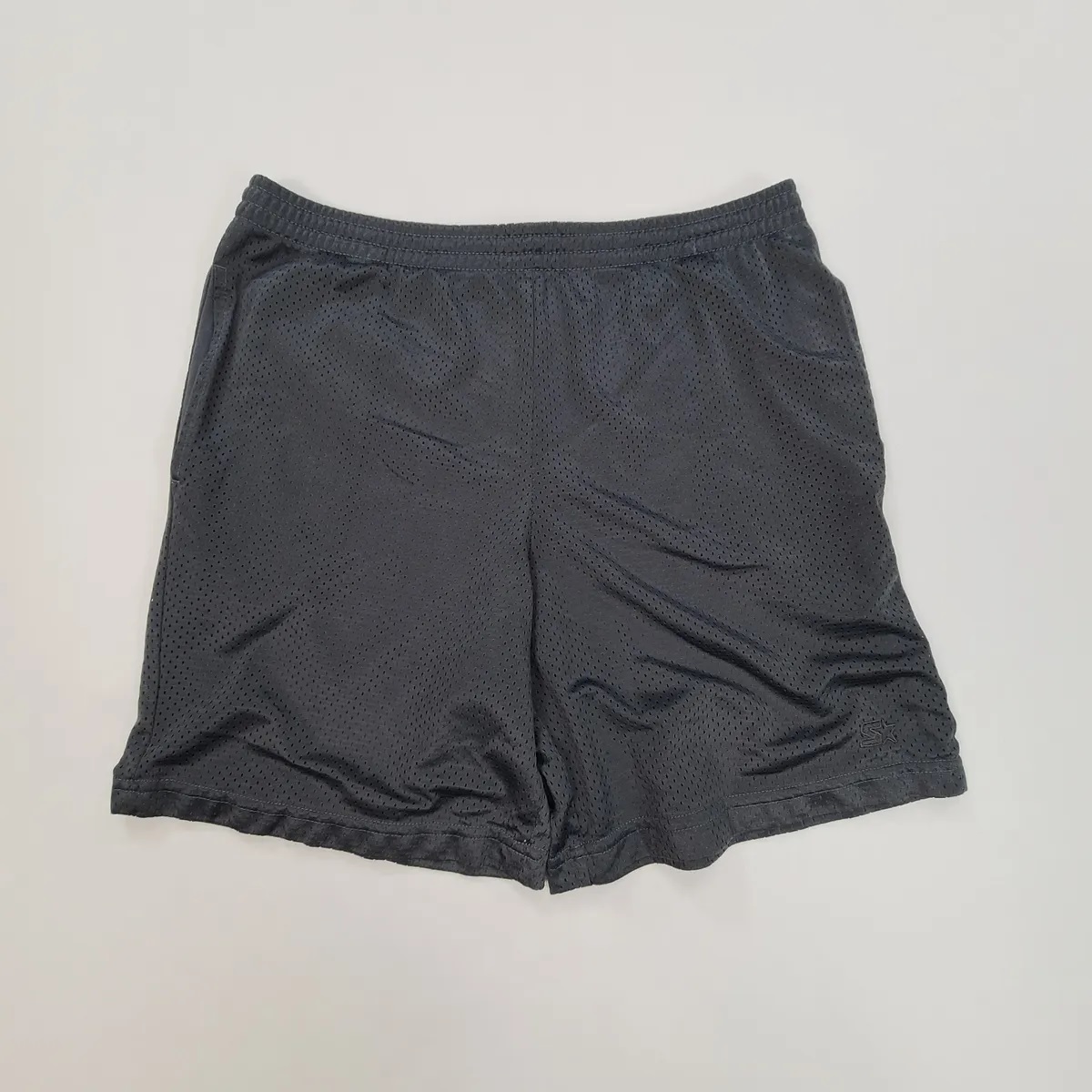

Featured
I Get Headaches When I Workout
Modified: January 2, 2024
Get relief from workout-induced headaches with our featured remedies and tips. Say goodbye to discomfort and enjoy your fitness routine without the pain.
Introduction
Working out is essential for maintaining a healthy lifestyle. It can improve cardiovascular health, boost mood, and increase overall fitness. However, for some individuals, exercising can come with an unwanted side effect: headaches. Exertion headaches, also known as exercise-induced headaches, can range from mild discomfort to debilitating pain, often hindering one’s ability to continue physical activity. Understanding the triggers, causes, and management strategies for exercise-related headaches is crucial for individuals who experience this issue.
Exertion headaches can occur during or after intense physical activity, such as weightlifting, running, or high-intensity interval training. These headaches typically manifest as a throbbing pain on both sides of the head and can last for several minutes or even days. The pain is often exacerbated by exertion and may be accompanied by other symptoms, such as nausea, vomiting, or sensitivity to light and sound.
The good news is that exercise-induced headaches are typically benign and not a cause for serious concern. They are thought to be caused by temporary changes in blood flow and pressure within the blood vessels of the brain. Understanding the triggers and implementing prevention strategies can help minimize the occurrence of these headaches. However, it’s important to consult with a healthcare professional if you experience severe or persistent headaches to rule out any underlying medical conditions.
In this article, we will explore the common triggers for exercise-induced headaches, examine the causes and mechanisms behind them, and discuss prevention and management strategies. By implementing the right techniques and taking care of your body, you can continue to enjoy the benefits of exercise without the discomfort of exertion headaches.
Understanding Exertion Headaches
Exertion headaches, as the name suggests, are headaches that are triggered by physical exertion. These headaches can occur during or after intense physical activity and are often described as a throbbing pain on both sides of the head. While the exact cause of exertion headaches is still not fully understood, they are believed to be related to temporary changes in blood flow and pressure within the blood vessels of the brain.
There are two main types of exertion headaches: primary and secondary. Primary exertion headaches are the most common and occur in individuals who are otherwise healthy. They are typically benign and not a sign of an underlying condition. Secondary exertion headaches, on the other hand, are caused by an underlying medical condition, such as a brain tumor or a vascular abnormality. These types of headaches are less common but require medical attention.
Exertion headaches can vary in severity and duration. Some individuals may only experience a mild headache that resolves quickly, while others may endure more intense pain that lasts for hours or even days. The pain is often exacerbated by physical activity and may be accompanied by other symptoms, such as nausea, vomiting, or sensitivity to light and sound.
It is important to note that exertion headaches can affect anyone, regardless of age or fitness level. However, certain factors may increase the likelihood of experiencing these headaches. For example, individuals who are new to exercising or who engage in sudden, intense physical activity are more prone to exertion headaches. Additionally, dehydration, muscle tension, and poor posture during exercise can contribute to the development of these headaches.
To effectively manage and prevent exertion headaches, it is crucial to understand their triggers and underlying causes. By identifying the factors that contribute to the onset of these headaches, individuals can take steps to minimize their occurrence and ensure a more enjoyable and pain-free exercise experience.
Common Triggers for Exercise-Induced Headaches
Exercise-induced headaches can be triggered by various factors. By understanding these common triggers, individuals can take proactive measures to reduce the occurrence of exertion headaches. Let’s explore some of the factors that can contribute to these headaches:
- Strenuous physical activity: Engaging in high-intensity workouts or sudden bursts of intense exercise can increase the risk of exertion headaches. Activities such as weightlifting, running, or intense cardio workouts are often associated with these headaches.
- Dehydration: Inadequate hydration before, during, or after exercise can lead to headaches. Dehydration affects the body’s overall fluid balance and can cause blood vessels in the brain to constrict, resulting in a headache.
- Heat and humidity: Exercising in hot and humid conditions can also trigger exertion headaches. When the body is unable to cool down efficiently, blood vessels can dilate, leading to increased blood flow and potential headache development.
- Poor posture and muscle tension: Incorrect exercise techniques, such as poor posture or excessive muscle tension, can strain the neck and head muscles, leading to headaches. It is essential to maintain proper form and technique during workouts to minimize the risk of exercise-induced headaches.
- Excessive stress: High levels of stress and tension can contribute to the development of exertion headaches. Chronic stress can result in muscle tension and affect blood flow, increasing the likelihood of experiencing headaches during exercise.
- Skipping warm-up and cool-down: Failing to properly warm up and cool down before and after exercise can increase the risk of exertion headaches. Adequate warm-up prepares the body for physical activity and helps prevent sudden increases in blood pressure, while cool-down exercises promote proper blood flow and relaxation of muscles.
It is important to remember that each individual may have unique triggers for exercise-induced headaches. Identifying the specific factors that contribute to your headaches can help you take targeted steps to prevent and manage them. Keeping a journal can be a helpful tool to track patterns and identify potential triggers. By being aware of these triggers, you can make informed decisions to modify your exercise routine accordingly and reduce the likelihood of experiencing exertion headaches.
Causes and Mechanisms of Exertion Headaches
While the exact causes of exertion headaches are not fully understood, research suggests that they are likely related to temporary changes in blood flow and pressure within the blood vessels of the brain. Several factors contribute to the development of these headaches, including:
- Increased blood flow: During exercise, the body’s demand for oxygen and nutrients increases, leading to an increase in blood flow. This increased blood volume can cause blood vessels in the brain to dilate, potentially triggering headaches.
- Increased intracranial pressure: Intense physical activity can elevate blood pressure and increase intracranial pressure. This pressure can put strain on blood vessels, leading to headaches.
- Chemical imbalances: During exercise, there is a release of various neurotransmitters, such as serotonin and endorphins. These chemicals can affect blood vessel functioning and contribute to the development of exertion headaches.
- Muscle tension and tightness: Engaging in strenuous exercise without proper warm-up or due to poor posture can result in muscle tension and tightness. This muscle tension can extend to the neck and head muscles, causing headaches.
- Dehydration and electrolyte imbalances: Inadequate hydration and electrolyte imbalances can lead to constriction of blood vessels, reducing blood flow to the brain and potentially triggering headaches.
- Heat and humidity: Exercising in hot and humid environments can cause the body to overheat, resulting in increased blood flow and potential headaches.
It is important to note that exertion headaches can also be influenced by underlying medical conditions. For example, individuals with a history of migraines may be more prone to experiencing exertion headaches. Additionally, individuals with conditions that affect blood vessel function, such as high blood pressure or cardiovascular disorders, may be at a higher risk.
While exertion headaches are usually harmless, it is crucial to differentiate them from secondary exertion headaches, which can be a sign of more serious underlying conditions. If you experience severe or persistent headaches during or after exercise, it is advisable to consult with a healthcare professional for proper diagnosis and evaluation.
By understanding the causes and mechanisms behind exertion headaches, individuals can take proactive steps to prevent and manage them. Implementing techniques to minimize blood vessel dilation, managing muscle tension, maintaining proper hydration, and gradually increasing exercise intensity can all help reduce the incidence of exertion headaches and ensure a more enjoyable workout experience.
Prevention and Management Strategies for Exercise-Related Headaches
Experiencing headaches during or after exercise can be frustrating and impact your workout routine. However, with the right prevention and management strategies, you can significantly reduce the frequency and intensity of exercise-related headaches. Here are some effective strategies to consider:
- Hydration and Nutrition: Proper hydration is crucial to prevent headaches. Drink plenty of fluids before, during, and after exercise, especially in hot and humid environments. Additionally, ensure a well-balanced diet to provide your body with necessary nutrients.
- Proper Warm-up and Cool-down: Always incorporate a thorough warm-up and cool-down routine into your exercise regimen. This helps prepare your body for physical activity and promotes proper blood flow, reducing the risk of headaches.
- Maintaining Proper Technique: Use correct posture and technique during exercise to minimize muscle tension and strain on the neck and head. Engage in exercises that promote good posture and body alignment, and seek guidance from a fitness professional if needed.
- Gradual Progression and Avoidance of Overexertion: Avoid sudden increases in exercise intensity or duration. Gradually progress your workouts and listen to your body’s limits to prevent overexertion, which can contribute to headaches.
- Identifying and Avoiding Triggering Exercises or Activities: Pay attention to activities that consistently trigger your headaches. If certain exercises or movements consistently lead to headaches, consider modifying or avoiding them altogether.
- Managing Stress and Muscle Tension: Engage in stress-reducing techniques such as meditation, deep breathing exercises, or yoga to manage stress levels. Additionally, incorporate stretches and relaxation exercises targeting neck and shoulder muscles to relieve tension.
If exercise-related headaches persist despite preventive measures, seeking medical advice is recommended. A healthcare professional can evaluate your symptoms, perform a comprehensive examination, and provide appropriate treatment options. They may also recommend certain medications to alleviate headache symptoms, if necessary.
Remember, everyone’s experience with exercise-induced headaches is unique. It may take some trial and error to find the right combination of strategies that work for you. By being proactive and implementing these prevention and management techniques, you can minimize the impact of exercise-related headaches and continue to enjoy the many benefits of physical activity.
Hydration and Nutrition
Proper hydration and nutrition play a crucial role in preventing exercise-related headaches. Dehydration and improper nutrition can contribute to the development of headaches during or after physical activity. By prioritizing hydration and maintaining a well-balanced diet, you can reduce the frequency and severity of exercise-induced headaches. Here’s what you need to know:
Hydration: Adequate hydration is essential for overall health and optimal athletic performance. When it comes to preventing exercise-induced headaches, staying properly hydrated is paramount. Dehydration can lead to a decrease in blood volume and constrict blood vessels, potentially triggering headaches. To stay hydrated:
- Drink water regularly throughout the day, not just during exercise. Aim for at least eight cups (64 ounces) of water daily, or more if you’re engaging in intense physical activity or exposed to hot weather.
- Monitor your urine color to gauge your hydration levels. Clear or light yellow urine is an indication of adequate hydration, while dark yellow urine may be a sign of dehydration.
- Consider sports drinks or electrolyte replacement beverages if you’re engaging in prolonged or intense exercise. These drinks can help replenish electrolytes lost through sweat.
Nutrition: A well-balanced diet provides your body with the necessary fuel for optimal performance and helps prevent headaches associated with exercise. Consider the following nutritional tips:
- Eat a variety of nutrient-rich foods, including fruits, vegetables, whole grains, lean proteins, and healthy fats. These foods provide essential vitamins, minerals, and antioxidants that support overall health and can help prevent headaches.
- Avoid skipping meals, especially before exercise. Low blood sugar levels can trigger headaches, so it’s important to have regular, balanced meals and snacks throughout the day.
- Include sources of magnesium and riboflavin (vitamin B2) in your diet, as deficiencies in these nutrients have been linked to migraines. Good sources of magnesium include leafy green vegetables, nuts, seeds, and whole grains. Riboflavin can be found in dairy products, lean meats, eggs, and fortified cereals.
Individual hydration and nutritional needs may vary, so listen to your body and make adjustments accordingly. Weight, activity level, climate, and personal preferences can all influence your hydration and nutritional requirements. It may be helpful to consult with a registered dietitian or healthcare professional to develop a customized nutrition plan that meets your specific needs and helps prevent exercise-related headaches.
By prioritizing proper hydration and nutrition, you can support your body’s optimal functioning and minimize the occurrence of exercise-induced headaches. Remember to drink plenty of water, maintain a balanced diet, and listen to your body’s signals to ensure that you’re adequately nourished and hydrated before, during, and after physical activity.
Proper Warm-up and Cool-down
Warm-up and cool-down exercises are often overlooked but are essential components of any exercise routine. Incorporating these phases into your workouts can not only enhance performance and prevent injuries but also help reduce the occurrence of exercise-related headaches. Here’s why proper warm-up and cool-down are important and how to implement them effectively:
Warm-up: A thorough warm-up prepares your body for the physical demands of exercise, gradually increasing your heart rate, circulation, and body temperature. It helps loosen up muscles, tendons, and joints, ensuring they’re ready for the upcoming activity. A good warm-up can:
- Improve blood flow and oxygen delivery to muscles, reducing the risk of muscle cramps and headaches.
- Promote neuromuscular activation, enhancing coordination and muscle firing patterns, which can reduce the risk of poor technique that may contribute to headaches.
- Prepare your cardiovascular system for the increased demands of exercise, preventing sudden spikes in blood pressure that can trigger headaches.
A warm-up should consist of low-intensity aerobic activities, such as light jogging, cycling, or jumping jacks, followed by dynamic stretching to mobilize major muscle groups. Aim for a duration of 5 to 10 minutes, gradually increasing the intensity as you progress.
Cool-down: After completing your workout, it’s equally important to allow your body to gradually recover and return to its resting state. Cooling down effectively can:
- Help regulate blood flow and prevent blood from pooling in the extremities, potentially reducing the risk of headaches.
- Promote the removal of waste products, such as lactic acid, from the muscles, reducing muscle soreness and tension that can contribute to headaches.
- Allow your heart rate and blood pressure to gradually return to normal levels, reducing the risk of sudden changes that may trigger headaches.
A proper cool-down may include low-intensity exercises, such as walking or gentle stretching. Aim for a duration of 5 to 10 minutes or longer, depending on the intensity and duration of your workout. Remember to prioritize stretching major muscle groups to promote flexibility and relaxation.
When performing warm-up and cool-down exercises, be mindful of your body’s needs and any specific areas of tension or tightness. Incorporate specific stretches or mobility exercises to address these areas and release any muscular tightness that may contribute to headaches.
By incorporating proper warm-up and cool-down routines into your exercise regimen, you can help prevent exercise-induced headaches by preparing your body effectively for physical activity and facilitating recovery afterward. Take the time to warm up before your workouts and cool down afterward to promote optimal performance, reduce the risk of injuries, and minimize the occurrence of exercise-related headaches.
Maintaining Proper Technique
Maintaining proper technique during exercise is crucial not only for maximizing results but also for preventing exercise-related headaches. Poor form and improper technique can lead to muscle tension, strain on the neck and head, and increased risk of injury, all of which can contribute to the development of headaches. Here’s why proper technique matters and how to ensure you’re using it:
Importance of Proper Technique: When you perform exercises with incorrect form, it can place unnecessary stress on your body and lead to muscle imbalances, joint instability, and increased tension. This tension can extend to the neck and head, potentially triggering headaches. Proper technique can:
- Help distribute the workload evenly across muscle groups, reducing the strain on specific areas and minimizing the risk of tension-induced headaches.
- Ensure optimal alignment and positioning of the body, which can reduce the risk of muscle imbalances and incorrect muscle recruitment patterns.
- Promote efficient movement patterns, allowing your body to perform exercises with the least amount of effort and minimizing unnecessary strain.
Tips for Maintaining Proper Technique: To help maintain proper technique during your workouts and prevent exercise-related headaches, consider the following tips:
- Take the time to learn correct form for each exercise. Seek guidance from a qualified fitness professional or watch instructional videos for proper technique.
- Start with lighter weights and gradually progress to heavier weights. This allows you to focus on maintaining proper form without compromising your technique.
- Engage your core muscles and maintain good posture throughout your exercises. This helps stabilize your spine and reduces unnecessary strain on the neck and head.
- Perform exercises in front of a mirror to visually assess your form and make any necessary adjustments. This can help you identify areas where you may be prone to poor technique or excessive tension.
- Listen to your body and be aware of any sensations of discomfort or strain. If you experience pain or tension in your neck or head, stop the exercise and assess your form.
Remember, quality should always take precedence over quantity. It’s better to perform exercises with proper technique and lower weights than to sacrifice form for heavier loads. As you progress and build strength, you can gradually increase the intensity while still prioritizing proper form.
By maintaining proper technique during your workouts, you can reduce the risk of muscle tension and strain on the neck and head, minimizing the occurrence of exercise-related headaches. Paying attention to your form, seeking guidance when needed, and listening to your body will ensure that your workouts are safe, effective, and headache-free.
Gradual Progression and Avoidance of Overexertion
Gradual progression and avoiding overexertion are essential for preventing exercise-related headaches and ensuring a safe and effective fitness journey. Pushing yourself too hard, too soon can lead to increased muscle tension, elevated blood pressure, and potential headache development. Here’s why gradual progression and avoiding overexertion are important and how to implement them:
Importance of Gradual Progression: Gradually progressing your workouts allows your body to adapt and adjust to the increasing demands of physical activity. It allows your muscles, cardiovascular system, and other physiological processes to develop and strengthen over time. Gradual progression can:
- Minimize the risk of sudden spikes in blood pressure, which can trigger headaches during intense exercise.
- Reduce the likelihood of muscle imbalances and excessive strain on the neck and head due to rapid increases in weight or intensity.
- Give your body time to adjust to the demands of new exercises or activities, reducing the risk of overuse injuries and potential headache development.
Tips for Gradual Progression and Avoiding Overexertion: To safely progress your workouts and prevent exercise-related headaches, follow these tips:
- Start with a comfortable intensity and gradually increase it over time. This can be done by increasing the duration, frequency, or intensity of your workouts, but not all at once.
- Listen to your body and pay attention to signs of fatigue or discomfort. Push yourself, but avoid going to the point of exhaustion or extreme discomfort.
- Follow the principle of progressive overload, which involves gradually increasing the demands placed on your body to stimulate adaptation and improvement, while still allowing for proper recovery.
- Incorporate regular rest days into your training schedule to give your body time to recover and recharge. It’s during rest and recovery that your body actually becomes stronger and more resilient.
- Consider working with a qualified fitness professional who can provide guidance on exercise progression and help design a workout plan tailored to your specific needs and goals.
Remember, everyone’s fitness journey is unique, and what works for one person may not work for another. It’s important to listen to your body and progress at a pace that feels comfortable for you. Overexertion and pushing yourself too hard can not only lead to headaches, but also increase the risk of injuries and hinder your long-term progress.
By gradually progressing your workouts and avoiding overexertion, you can minimize the risk of exercise-related headaches. Prioritize gradual increases in intensity, give your body adequate time to adapt and recover, and be mindful of your limitations. This approach will help you build strength, endurance, and overall fitness while keeping headaches at bay.
Identifying and Avoiding Triggering Exercises or Activities
Identifying and avoiding triggering exercises or activities is a crucial step in preventing exercise-related headaches. Everyone may have different triggers that can lead to headache development, and being aware of these triggers can help you make informed decisions about your workout routine. Here’s how to identify and avoid exercises or activities that may contribute to headaches:
Keep a Headache Journal: Start by keeping a headache journal where you record your exercise sessions, including the type of exercise, duration, intensity, and any headaches experienced. Pay attention to patterns or trends that emerge, such as specific exercises or activities consistently triggering headaches. This journal can help you identify and avoid potential headache triggers in your routine.
Monitor Exertion Levels: Be mindful of your exertion levels during workouts. Pushing yourself to the point of exhaustion or extreme fatigue can increase the risk of headaches. If you consistently experience headaches after particular exercises or activities, consider reducing the intensity or duration until you find a level that is manageable for you.
Consider Impact and Intensity: High-impact exercises, such as running or jumping, may exacerbate headaches due to the jarring and repetitive movements. If these types of exercises consistently trigger headaches, consider exploring lower-impact alternatives, such as swimming or cycling. Similarly, extremely intense workouts may also contribute to headaches, so finding a balance that challenges you without overexerting yourself is important.
Avoid Overexertion in Hot and Humid Environments: Exercising in hot and humid conditions can increase the risk of dehydration, which can contribute to headaches. If you live in a hot climate or are working out in high temperatures, take extra precautions to stay hydrated and consider adjusting your workout routine to cooler times of the day.
Modify or Substitute Exercises: If you consistently experience headaches with specific exercises, consider modifying or substituting them with alternative movements that engage similar muscle groups. For example, switching from overhead presses to lateral raises or using dumbbells instead of a barbell for bench presses. Experimenting with variations can help you find exercises that are better suited to your body and minimize the risk of trigger-related headaches.
Remember, it’s important to listen to your body and respect its limits. If certain exercises or activities consistently trigger headaches, it’s best to avoid or modify them to prevent unnecessary discomfort. Consult with a qualified fitness professional or healthcare provider if you need guidance on exercise modifications or alternatives.
Identifying and avoiding triggering exercises or activities is a personal process that requires self-awareness and experimentation. By being proactive and adapting your workout routine to your specific needs, you can minimize the occurrence of exercise-related headaches and ensure a more enjoyable and fulfilling exercise experience.
Managing Stress and Muscle Tension
Managing stress and muscle tension is crucial for preventing exercise-related headaches. Stress and tension can lead to increased muscle tightness, which can contribute to headaches during or after physical activity. By implementing stress-management techniques and addressing muscle tension, you can reduce the risk of exercise-induced headaches. Here’s how to effectively manage stress and muscle tension:
Stress Management: Chronic stress can have a negative impact on your physical and mental well-being, including an increased risk of headaches. Here are some stress-management strategies to help prevent exercise-related headaches:
- Practice relaxation techniques, such as deep breathing exercises, meditation, or mindfulness. These techniques can help calm your mind and relax your body, reducing stress and tension.
- Engage in activities that help you unwind and relax, such as listening to calming music, taking a bath, going for a walk in nature, or spending time with loved ones.
- Find healthy outlets for stress, such as participating in hobbies, journaling, or practicing yoga or tai chi. These activities can help reduce stress levels and promote overall well-being.
- Develop a consistent sleep routine and prioritize getting enough restful sleep. Quality sleep can help reduce stress and promote muscle relaxation.
- Seek support from a therapist or counselor if you are dealing with chronic stress or if stress is significantly impacting your daily life. They can provide guidance and effective coping strategies.
Muscle Tension: Muscle tension, particularly in the neck and shoulder area, can contribute to headaches during exercise. Here are some strategies to manage and relieve muscle tension:
- Incorporate stretches and exercises that specifically target the neck, shoulder, and upper back muscles. These can help relieve tension and improve flexibility in these areas.
- Consider using self-massage techniques or tools like foam rollers or massage balls to release muscle tension. Apply gentle pressure to tight muscles to help alleviate trigger points and promote relaxation.
- Practice good posture both during exercise and throughout the day. Slouching or hunching over can strain muscles and contribute to tension headaches.
- Engage in regular physical activity that promotes overall muscle strength and flexibility. Activities like yoga, Pilates, or swimming can help improve posture and reduce muscle tension.
- Pay attention to your body’s signals and take breaks when needed. If you start to feel tightness or discomfort, pause, stretch, and rest to prevent excessive muscle tension.
It’s important to remember that managing stress and muscle tension is an ongoing process. Experiment with different techniques and strategies to find what works best for you. By incorporating stress-management practices and addressing muscle tension, you can minimize the risk of exercise-related headaches and promote overall well-being. If stress or tension persists or significantly impacts your daily life, consider seeking support from a healthcare professional or therapist for personalized guidance and support.
Seeking Medical Advice and Treatment
While exercise-induced headaches are usually benign and self-limiting, it’s important to seek medical advice if you experience severe or persistent headaches. A healthcare professional can evaluate your symptoms, rule out any underlying medical conditions, and provide appropriate treatment options. Here’s why seeking medical advice is important and how you can benefit:
Proper Diagnosis: Consulting with a healthcare professional allows for a proper diagnosis of your headaches. They will assess your symptoms, review your medical history, and conduct any necessary examinations or tests to determine the cause of your exercise-related headaches. This process can help identify any underlying conditions that may require specific treatment approaches.
Personalized Treatment Plan: A healthcare professional can develop a personalized treatment plan based on your specific needs and circumstances. This may include lifestyle modifications, medication recommendations, or referral to specialized services if necessary. They can also provide guidance on techniques to manage and prevent exercise-induced headaches, such as modifying your exercise routine or implementing relaxation strategies.
Monitoring of Progress: Regular follow-ups with a healthcare professional allow for ongoing monitoring of your headaches, treatment effectiveness, and any changes in your condition. They can help you adjust your treatment plan as needed, ensuring that you’re receiving optimal care and support for your exercise-related headaches.
It’s important to seek immediate medical attention if you experience any of the following warning signs during or after exercise: severe and sudden onset headache, headache accompanied by confusion, loss of consciousness, difficulty speaking, numbness or weakness on one side of the body, or severe neck pain. These symptoms may indicate a more serious underlying condition and require prompt medical evaluation.
Remember that healthcare professionals are experienced in diagnosing and treating various types of headaches. They can provide valuable insights and guidance tailored to your specific situation. If your exercise-related headaches are affecting your quality of life or persist despite implementing preventive measures, don’t hesitate to reach out to a healthcare professional for assistance.
In addition to medical advice, it’s important to prioritize self-care and listen to your body. Take the time to rest and recover when needed, maintain a balanced lifestyle, and make healthy choices that support your overall well-being.
By seeking medical advice and following prescribed treatment plans, you can effectively manage your exercise-related headaches and ensure that they do not hinder your active and healthy lifestyle.
Conclusion
Exercise-induced headaches can be a frustrating hindrance to an otherwise beneficial workout routine. However, by understanding the triggers, causes, and management strategies, you can take proactive steps to minimize their occurrence and continue to enjoy the many benefits of physical activity.
By identifying common triggers for exercise-induced headaches, such as strenuous physical activity, dehydration, poor technique, and stress, you can modify your exercise routine and make informed choices to prevent headaches. Gradual progression, proper hydration and nutrition, maintaining proper technique, managing stress and muscle tension, and seeking medical advice when necessary are all effective strategies to minimize the risk of exercise-related headaches.
Remember, each individual is unique, and it may take some trial and error to find the right combination of prevention and management strategies that work for you. Pay attention to your body’s signals, keep a headache journal, and seek expert guidance if needed. Your overall well-being and enjoyment of exercise should always be the top priority.
Take care of your body by implementing the tips and strategies discussed in this article. By doing so, you can strive for a headache-free exercise experience and focus on achieving your fitness goals. Embrace the power of knowledge and take control over exercise-induced headaches, ensuring that you can fully reap the benefits of an active and healthy lifestyle.








